Alexander Technique
- Holistic Therapy
- Available at 4 centres
- 4 therapists available
The Alexander Technique teaches the skilful "use of the self": how we move, how we stay still, how we breathe, how we learn, how we organise our awareness and focus of attention and, above all, how we choose our reactions in increasingly demanding situations.
It is a subtle and thoughtful discipline, but essentially practical and problem-solving. The Alexander Technique works through re-establishing the natural relationship between the head, the neck and the back - the "core" of the body that supports the strength of the limbs and which provides the structural environment for breathing and for the internal organs.
At the same time as learning to access the natural relationship between the head, neck and back, conscious and reasoned body awareness, spatial awareness and behavioural awareness are developed so that long-held patterns of movement, posture, breathing and muscular tension, and habits that, for example, affect our learning abilities and psychological stress reactions can be reassessed.
Learning gradually to refine and to utilise an improved relationship between the head, neck and back is powerfully health-giving. Good habits of diet and exercise are well understood in their capacity literally to "change what we are"; the long-term effects of good habits of the "use of the self" are less well known, but no less life-changing. You get stronger, you become both more relaxed and more alert, aches and pains fade, you feel calm, confident and self-reliant, you have more stamina, you think more clearly, you recover from injury more quickly, you cope with stress better.
As a result of these positive effects, the Alexander Technique is a popular programme for those looking to enhance personal performance across the whole spectrum of human activity, from elite athletic or artistic performance to the management of disability, pain, illness or injury. Although the effortless upright posture of small children is in sharp contrast to that of most adults, it is possible for practically anyone to rediscover freedom and ease in movement by learning to become aware of, and then learning gradually to strip away, the habits of movement, tension and reaction that interfere with, distort or obscure natural and healthy patterns of coordination.
The latest research supports this theory: In 2011, a study of postural tone concluded that the Alexander Technique alters the muscular tension along the spine and hips that supports the body against gravity, reducing stiffness in these areas. (Cacciatore, T.W.; Gurfinkel, V.S., Horak, F.B., Cordo, P.J., Ames, K.E. (1 February 2011. Increased dynamic regulation of postural tone through Alexander Technique training". Human Movement Science 30 (1): 74–89.) A 2008 study found marked improvement in addressing back pain with this technique (Paul Little et al., Randomized controlled trial of Alexander technique (AT) lessons, exercise, and massage (ATEAM) for chronic and recurrent back pain, British Medical Journal, August 19, 2008). A subsequent analysis and comparative study of the economic implications concluded that "a series of six lessons in Alexander Technique combined with an exercise prescription seems the most effective and cost effective option for the treatment of back pain in primary care." (Sandra Hollinghurst et al.,Randomised controlled trial of Alexander technique lessons, exercise, and massage (ATEAM) for chronic and recurrent back pain: economic evaluation, British Medical Journal, 11 December 2008).
Learning the Alexander Technique is like learning any complex skill, such as playing a musical instrument or sailing a yacht; you need a teacher who has been "playing" or "sailing" for their own pleasure and benefit for years, to teach you new skills, and to help you to incorporate them into your own understanding and your own practice. Similarly, the real value of the Alexander Technique lies in becoming able to apply its principles, by yourself, to your daily activities.
Reference: The Society of Teachers of the Alexander Technique (STAT) http://www.stat.org.uk
Life changing: freedom of movement, freedom from pain, improved alertness, able to learn again, improved confidence, better health, improved breathing, inner calmness, to mention but a few changes.
STAT pupil survey 2006





